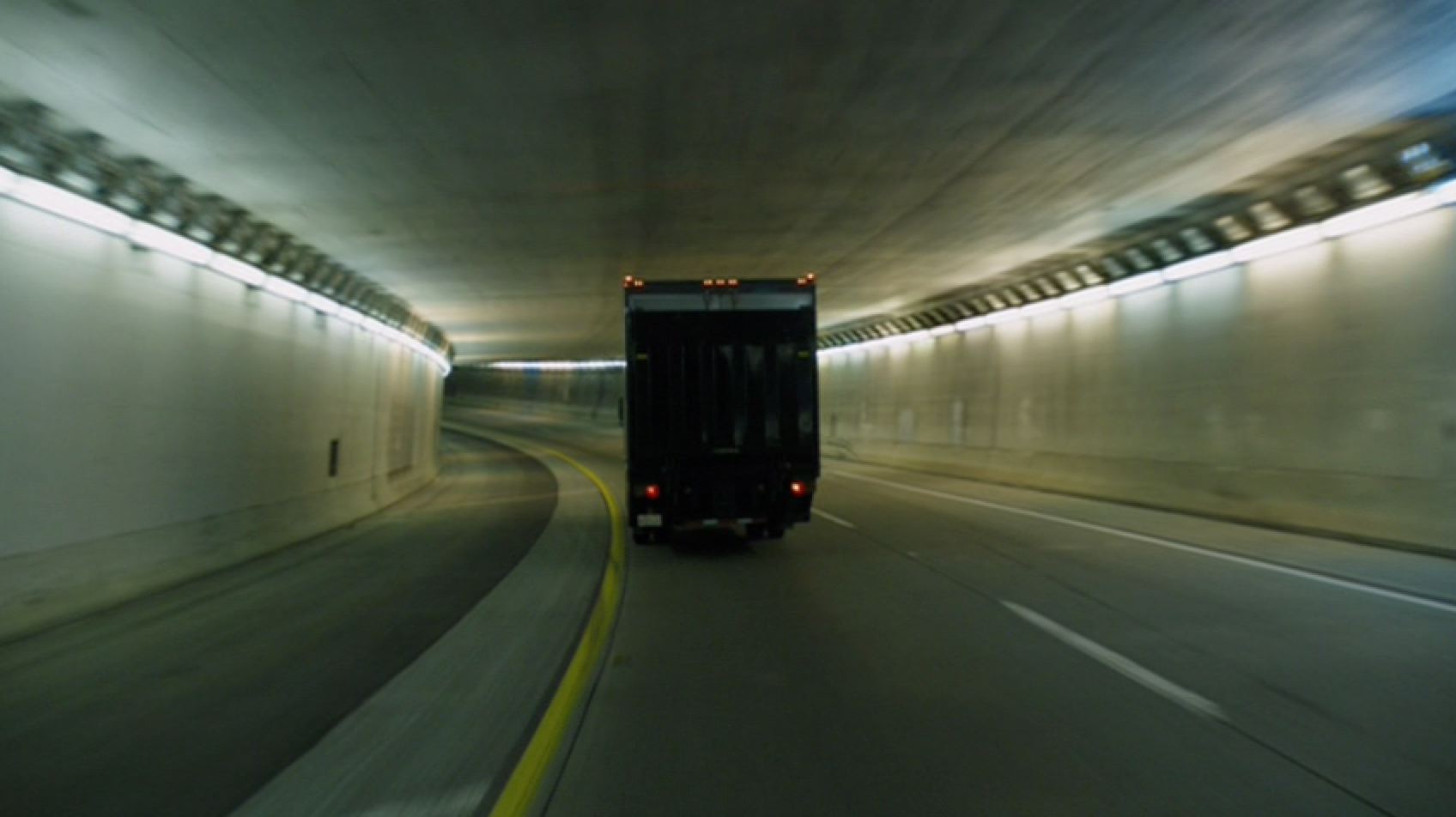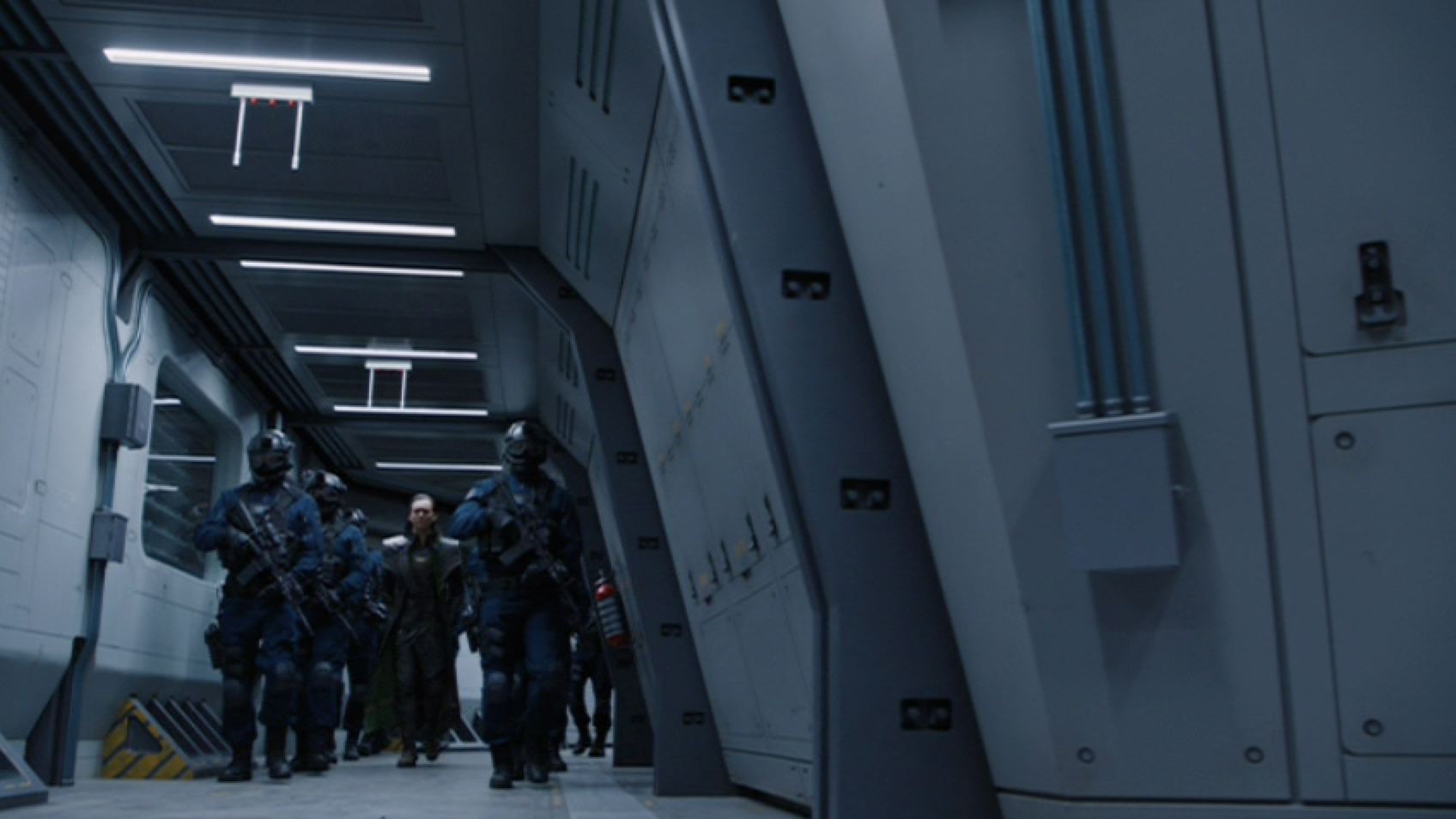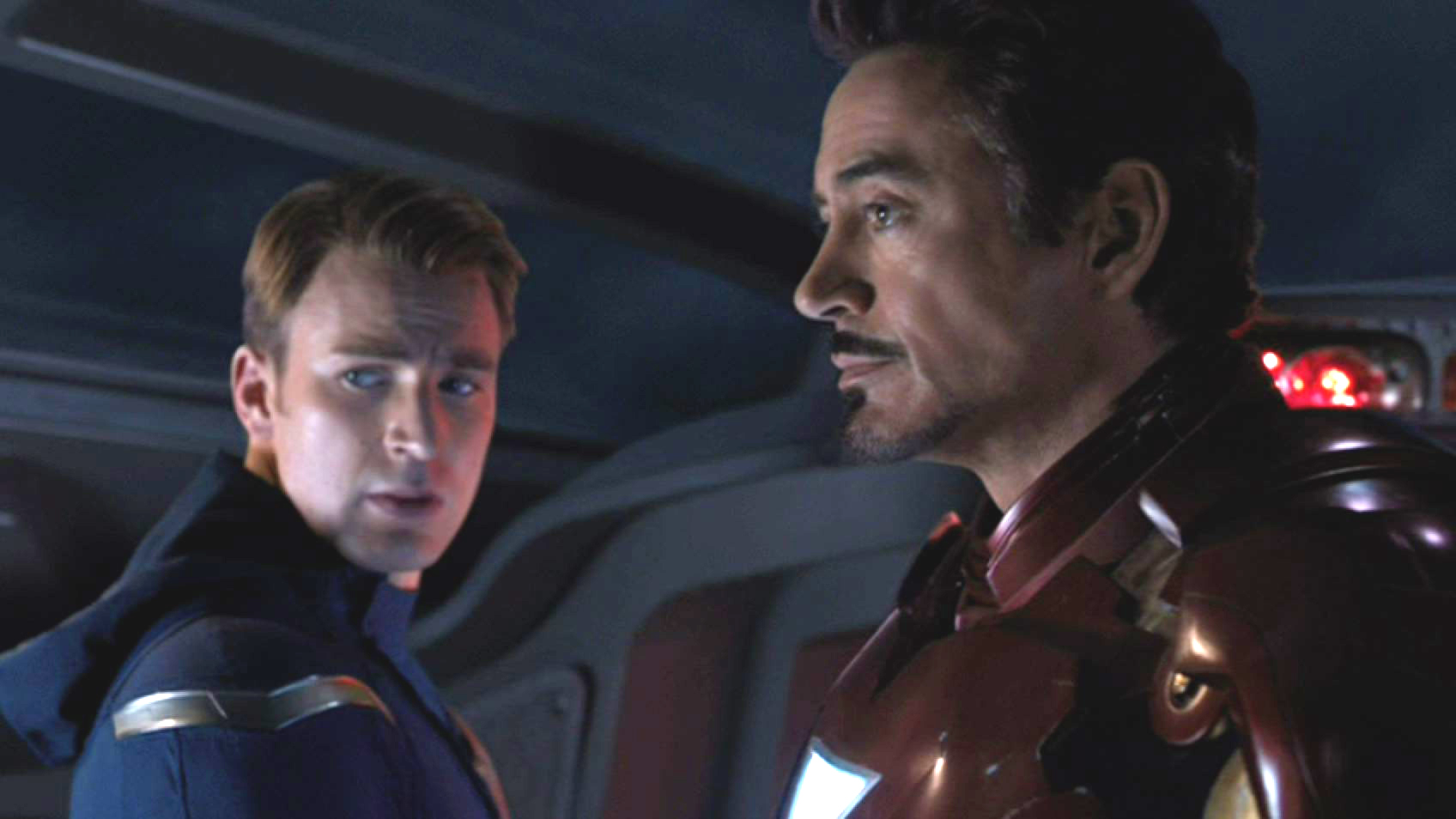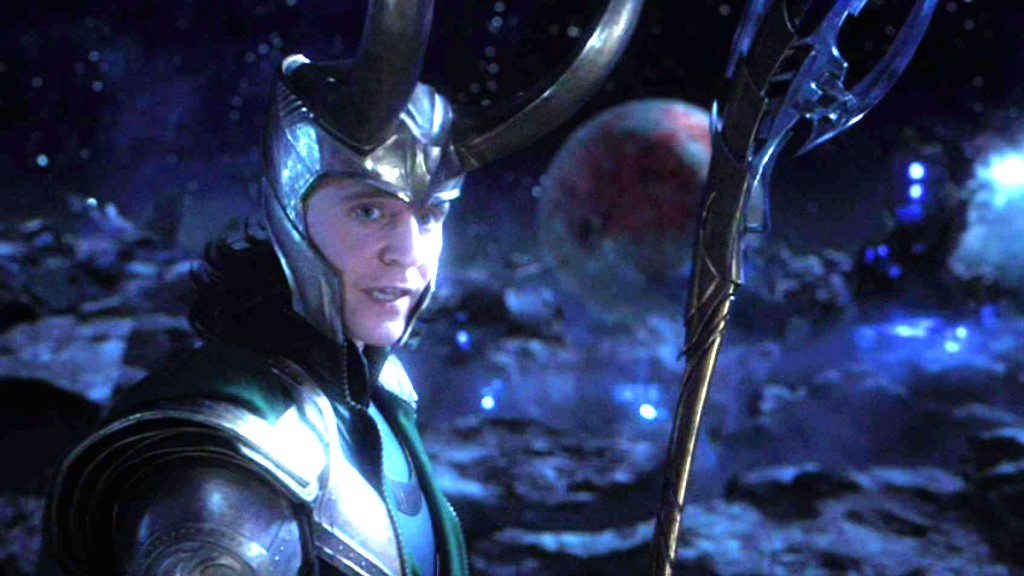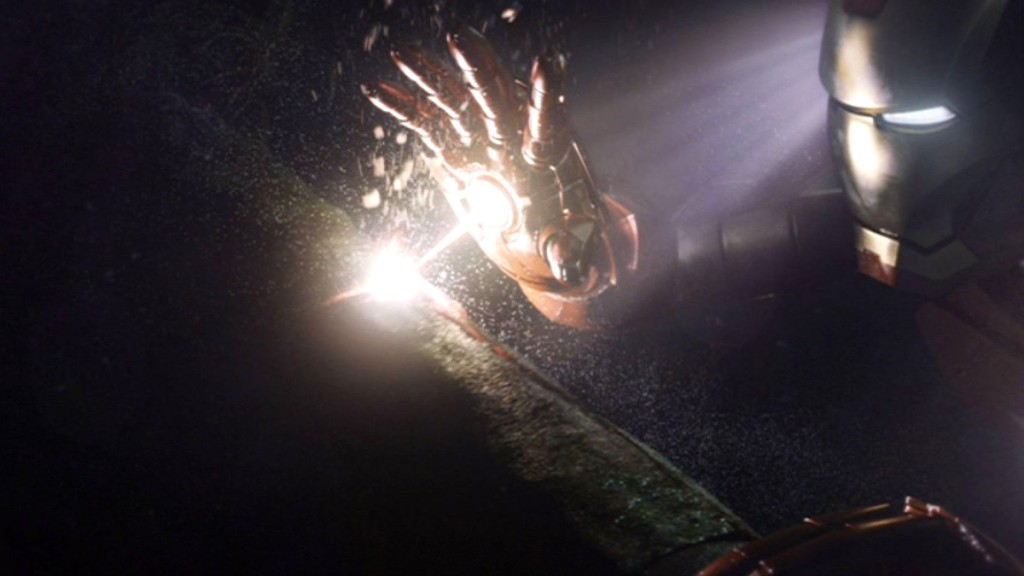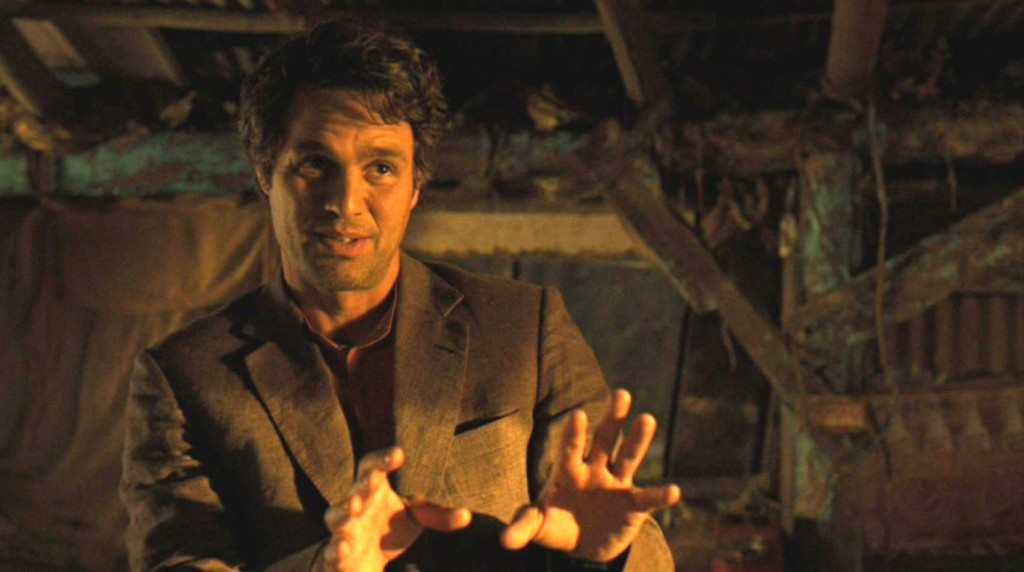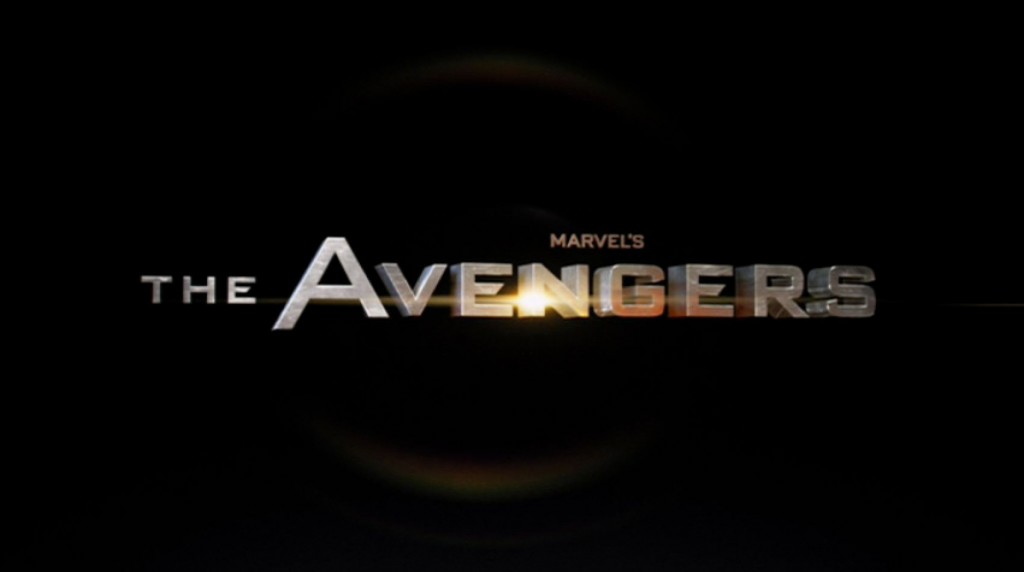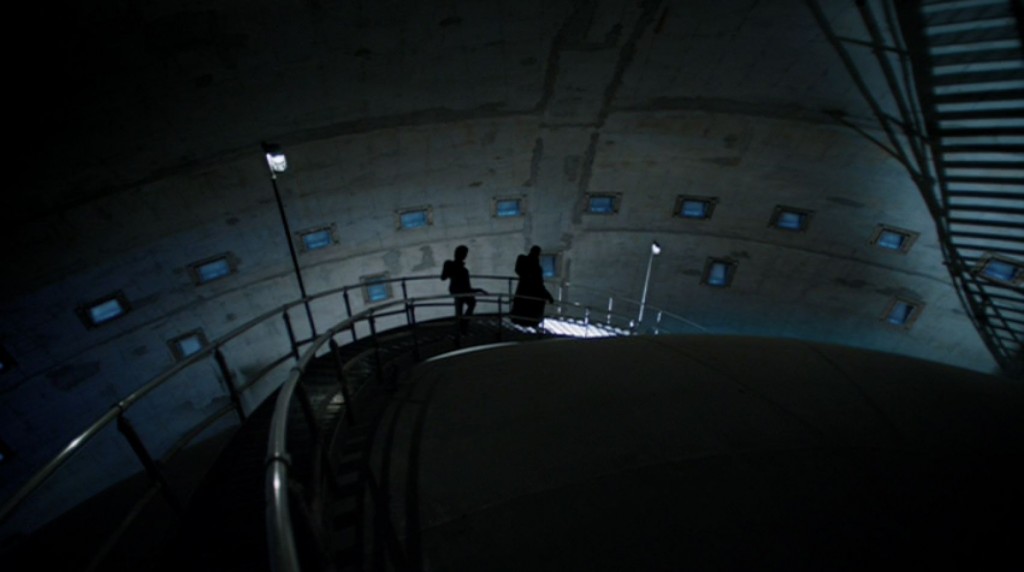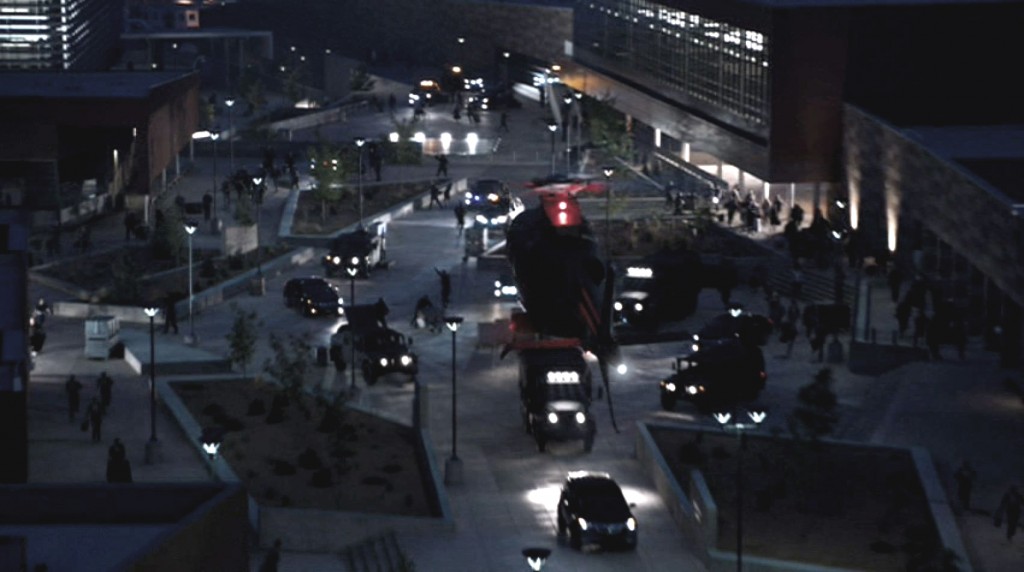The Avengers part 10
We briefly check in with Dr. Selvig, who is in a mobile laboratory, adding his stolen irridium to the Tesseract for whatever purpose. “Checking in with the Tesseract” generally signals an act break in The Avengers, so let’s see where we are now.
The Avengers part 9
Loki, our chief antagonist so far, is aboard SHIELD’s helicarrier. The viewer is a little confused: one street fight in Stuttgart, and the bad guy is captured? Loki’s introductory shot, so reminiscent of Hannibal Lecter in Silence of the Lambs, was not a coincidence. Loki will go on to make the Lecter comparison concrete. Not only will he play the Lecter suit of corrupting minds from his cell, he is, like Lecter in Silence, not the real anatgonist, only the most charismatic one, the one most fun to watch.
The Avengers part 8
Steve Rogers and Tony Stark have teamed up to capture Loki in Stuttgart, and now share a moment on the transport back to the helicarrier. The scene highlights the difference between Steve and Tony — Steve, still an idealist, suspects something is wrong but can’t imagine that the something wrong could be on his end, while Tony, cynical billionaire, questions everything, every angle, including Nick Fury’s, especially Nick Fury’s.
Enter Thor, who nabs Loki and absconds with him. “Now there’s that guy,” sighs Tony: not even a Norse god, well, a second Norse god, can faze him.
The Avengers part 7
At the top of Act II of The Avengers we begin where we began Act I, in space, with The Other and Loki, checking in. They talk about The Chitauri, to remind us that that’s a thing, they talk about the mysterious boss at the other end of the jukebox, and remind us that the boss wants The Tesseract, Or Else. We also learn that Loki was once “the rightful king of Asgard,” which gives him the horse in this race. Loki may not be the Ultimate Boss of The Avengers, but he has a much more compelling motivation: revenge against his brother Thor, who exiled him. This narrative stroke, to make two characters from Thor the hinge of the screenplay, is masterful: the traditional studio approach would be to take the wild cards of the franchise (Norse gods!) and ignore them compleely, or give them only token attention. But to put Loki and Thor at the middle of this gigantic tentpole money-making machine provides a useful bridge between the mundane (Hawkeye), the fantastic-but-still-believable (Iron Man), the straight-out fantastic (Capt America, Hulk), and the gonzo sci-fi alien spectacle of The Chitauri. The mere fact that one movie embraces all these characters is daring enough, but the screenplay for The Avengers distrubutes its narratve effects so judiciously and balances its characters so well that a common, non-comics-reading audient sees a Norse god taking orders from an alien in a robe and thinks “Okay, sure, I get it.” The fact that Loki’s motivation is both human and not centered on “conquering the universe” but one-upping his good-looking brother gives the narrative an appreciable scale and, thus, creates audience involvement in something patently absurd.
The Avengers part 6
Perhaps the most impressive feature of The Avengers is the way it balances the separate stories of its wildly disparate leads, so that we never, ever feel like “Oh, another Thor scene, ho hum, I guess it will end soon.” The screenplay keeps so many balls in the air that everything feels lively and inventive and fun, even when the plot isn’t being forwarded, or especially when the plot isn’t being forwarded. The balance of the superheroes is so strong, here it is, twenty-three minutes into the movie and we are suddenly thinking “Oh yeah, Iron Man is in this movie too, I totally forgot.”
What does Tony Stark want? Tony Stark wants to show the world that the machine that powers his heart, and his suit — his life, really — the Arc Reactor, is also a viable energy source. “Energy,” in this instance, is just another word for “power,” and power is what superhero narratives are all about — who has it, who does not, who wants it and what they will do to get it. In the case of Iron Man, “power” defines the two sides of Tony’s life — he is both a weapons merchant, a power broker of the purest kind, and a power provider, with his Arc Reactor. He bets both sides of the coin, even if he stops selling weapons, he is still a weapon himself, a walking, thinking weapon.
Of defense, of course, which is always the problem of a superhero narrative — if the protagonist has more power than those around him, he must, must use that power in defense of those people. The trick is how to make that character interesting, to not make him a Boy Scout. Batman makes its protagonist obsessive and brooding, Hulk makes its protagonist an agonist who doesn’t want to use his powers at all, and Superman — well, that’s part of the reason why Superman is so hard to do in a cinematic narrative, he’s both a boy scout and resolutely unbeatable. Iron Man, on the other hand, makes its protagonist kind of a jerk — flawed, vain, conceited.
Who has power in The Avengers isn’t as interesting as who wants it, and who loves it. Thanos, apparently, has all the power in the universe, except for that one thing. The Other, it would seem, has as much power as any being could hope for — he towers over Loki, a freaking god already, and has armies at his disposal, but is a mere lackey in the presence of Thanos, and a bootlicker at that. Contrast him with Nick Fury, who also must report to a mysterious disembodied power, his committee, but who holds them at arm’s length, with distrust, and wants primarily to create a family. Then contrast Fury with Coulson, who is polite and diffident with Fury but holds a stunning amount of his own power, then contrast Coulson with Tony Stark, who treats Coulson like a teaching assistant he has to be nice to.
“La Swing Bossiste”
I’d like to interrupt my analysis of The Avengers to draw your attention to a video by a friend of mine, Reuben Saunders, who has created a 1920s Jazz version of “The Humpty Dance.” The results speak for themselves.
The Avengers part 5
We now scoot over to India, where we meet Bruce Banner. Or rather, first we meet a little Indian girl, who dashes through a slum in search of Dr. Banner to aid her dying father. The little girl’s desperation is palpable, and the good doctor can hardly help but follow her. Our hearts go out to the little girl, and we desperately want to see Dr. Banner help her father. Like everything in The Avengers, this is played out very quickly but with great efficiency. A little drama is created, as our protagonist shifts from Nick Fury to Black Widow to this little girl on her mission to save her father. And, because the direction is so sure and the production design so convincing, we accept the truth and stakes of the girl’s plight.
The little girl, it turns out, is bait, set by Black Widow to capture Bruce. The little girl, in her helplessness, plays on Bruce’s good nature and feelings of sympathy and gets him to go to an empty house. There’s a wonderful moment just before they get to the house where the police roll by and Bruce shields the little girl with his body, as though keeping her out of the hands of the authorities. He is, of course, keeping himself out of the hands of the authorities, but he plays the moment for the sake of the girl, as “the caring father.”
Kurt Vonnegut once said “We are what we pretend to be, so we must be very careful what we pretend to be.” This applies to no one in the comics universe more than Bruce Banner, who must be very careful indeed what he pretends to be. His life as a doctor is, in its way, a performance, or an act of contrition, a way to pay for the things he does as “the other guy.”
When the little girl leaves Bruce like a groom at the altar, we realize: the little girl isn’t just like Black Widow, she is Black Widow, using the patented Black Widow technique of getting men to let their guard down by putting on a weak-and-helpless act.
Read more
The Avengers part 4
Now that our movie has a protagonist, the question, as always, is “What does the protagonist want?” Superficially, the protagonist of The Avengers, Nick Fury, wants “to save the world,” that most generic of motives. To save the world, Fury must get a group of superheroes from vastly different backgrounds to work together.
Surprise! What the protagonist wants is exactly the same thing as what the writer-director wants! If Joss Whedon cannot succeed in getting his dog’s-breakfast of a cast to mesh, meld and work as a unit, his narrative will fail and no one will go see his movie. This not only gives the writer a keen insight into his protagonist’s character, it’s a stroke of genius, giving the narrative a spine that would otherwise make it an ensemble comedy-spectacle, an It’s a Mad, Mad, Mad, Mad World with superheroes.
The Avengers part 3
Our protagonist, Nick Fury, gets out of his helicopter, along with his sidekick Agent Maria Hill, and exchanges some rapid-fire dialogue with Agent Coulson as he heads down, down, down into the depths of the installation. He’s arrived in a helicopter, a symbol of power, and now he descends deep, deep underground. What does he talk about with Coulson? “A bunch of stuff.” The Tesseract, we come to understand, has done something surprising, which has necessitated the evacuation of the installation. The Tesseract, which, again, we don’t know what it is or what it does, is kept deep, deep underground because it’s so freaking powerful.
(Incidentally, why must the installation be evacuated? The answer: because The Avengers, in order to make the ton of money it needs to make, must be rated PG-13. The installation is about to go sky-high, so to speak, and if the movie begins with a catastrophic loss of life, it becomes Saving Private Ryan instead of the colorful spectacle it needs to be.)
The Avengers part 2
At the end of the last post I mentioned “stakes.” An important thing to understand about stakes is that they are directly related to the success of a cinematic narrative. When the stakes are low, the movie feels “small,” and the narrative decreases audience involvement. A movie about a guy who loses his keys is going to be less involving, to most people, than a movie about the end of the world. On a macro scale, less audience involvement generally means less audience. When the stakes are life-or-death, audience involvement increases. So The Avengers takes care to mention, right up front, that nothing less than the fate of all humanity, and the universe, is at stake. Not the planet, not the solar system or even the galaxy, but the universe. Obviously, this movie is playing for keeps.
